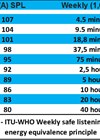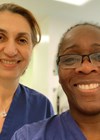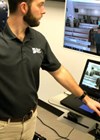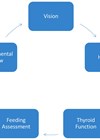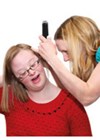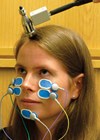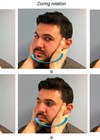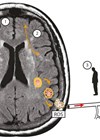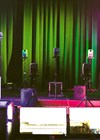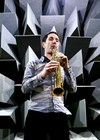Audiology features
Standards for Safe Listening – how they align and how some differ
The ‘Make Listening Safe workgroup’ is an initiative of The World Health Organization (WHO) in the framework of the World Hearing Forum and is committed to creating a world where nobody’s hearing is put in danger due to unsafe listening....
The challenges of facemasks for people with hearing loss
Since the start of the COVID-19 pandemic we have seen an exponential increase in the use of face masks. Guidance around the globe varies on the use of face masks as an effective barrier to the coronavirus. Whereas in pre-covid...
The power of the multidisciplinary team in paediatric cochlear implant assessment
Marette, Kate and Justine from the Birmingham Paediatric Centre give a detailed insight into how their team works together to assess children and young people for potential cochlear implantation. Cochlear implants and the specialist MDT The multidisciplinary team in cochlear...
A multidisciplinary approach to the management of the adult balance - dizzy patient
Richard Gans and Kimberly Rutherford, renowned experts from The American Institute of Balance, give their team’s overview of the stages involved in reaching ‘diagnosis based strategies’. For the dizzy patient, this focuses on patient-centred clinical pathways for individualised therapy with...
MDT assessment of children and adults with implantable acoustic devices (IADs)
Abi Asher, Clinical Lead for the IAD programme in Cambridge describes how hearing care professionals work together to make the best recommendation for the patient, in turn helping navigate through the various devices now on offer. Multidisciplinary teams (MDTs) are...
Multidisciplinary approach to managing individuals with trisomy 21
Michelle Chung and Narad Mathura outline the Down syndrome one-stop clinic; a multidisciplinary clinic introduced at the Children & Young Persons Audiology Centre (CYPAC) at Guys and St Thomas’ NHS Foundation Trust for children and young people with Down syndrome....
MDT clinics for adults with learning disabilities and hearing loss
Healthcare providers can have limitations and challenges providing optimum care for patients with intellectual disabilities. Siobhan Brennan and Susanna Goodhart highlight key professionals and carers who may be instrumental when trying to deliver good management and care along with other...
Recent changes in vestibular science and assessment
Clinical assessment of the dizzy or imbalanced patient is all about the patient’s history. History, history, history. But what about puzzling cases when we feel we need more information? Sally Rosengren gives us a rundown of the vestibular tests which...
Developments in diagnostic approaches for acutely dizzy patients
The acutely dizzy patient can be a diagnostic and management dilemma for emergency departments and general practitioners, with many patients consequently having delayed access to specialised assessment and treatment. David Jay tells us about HINTS, a bedside test that can...
Unexplained dizziness in elderly patients
How do we explain unexplained dizziness in elderly patients? How far should we go with investigations? And most importantly, how should we manage this challenging and expanding group of patients whose balance affects their safety? Richard Ibitoye and Diego Kaski...
The art and science of acoustic ecology
Aki Pasoulas summarises the diverse forms and approaches of the relatively new and expanding area of acoustic ecology, a discipline that studies the relationship between living beings and their sonic environment. Sound Ecology emerged in the late 1960s through the...
Building sound: from Stonehenge to a Symphony Hall
Modern architecture can use scientific techniques to shape room acoustics and create great sounding places. Professor Trevor Cox discusses our ancestors’ understanding of the importance of building techniques to enhance acoustics from Stonehenge to a Symphony Hall. Going to an...


